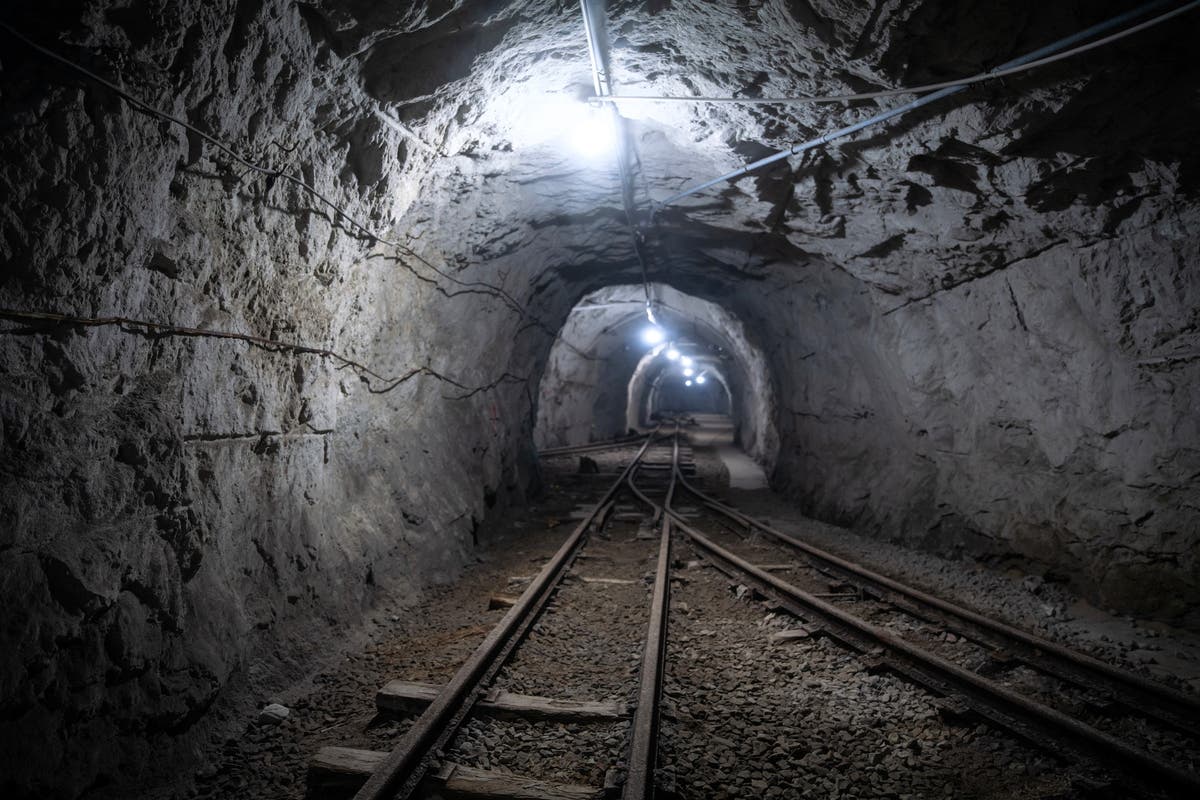An abandoned mine in Finland is set to be transformed into a giant battery to store renewable energy during periods of excess production.
The Pyhäsalmi Mine, roughly 450 kilometres north of Helsinki, is Europe’s deepest zinc and copper mine and holds the potential to store up to 2 MW of energy within its 1,400-metre-deep shafts.
The disused mine will be fitted with a gravity battery, which uses excess energy from renewable sources like solar and wind in order to lift a heavy weight. During periods of low production, the weight is released and used to power a turbine as it drops.



2nd paragraph and he’s already lost me. It would be nice if tech columnists had the equivalent of even a single semester of high school physics.
I googled
Pyhäsalmi Mine gravitricity "2 MW"and EVERY article covering this has also cited 2 MW.Now, under Occam’s Razor, what’s more likely:
I don’t know which one it is. But I’d generally lean against 1.
#2 is certainly food for thought. So the idea is that from a journalistic fact-checking point of view, it is more important to convey the information exactly as it was presented than to verify its accuracy?
This would explain why science/engineering-based articles are so commonly inaccurate or missing in critical details. The journalist can fall back on saying “I have a recording of an interview with the expert after we downed a few pints at the pub, and I’m just parroting back what he said. Don’t shoot the messenger!”
Just FYI, you need an escape backslant (\) preceeding the octothorpe (#) to not have your entire first paragraph bolded.
TIL that # is called an “octothorpe”. Thank you kind stranger.
It’s also correctly called:
But cool people use the bespoke octothorpe.
Noted. Thanks!
I’d honestly prefer raw parroting in most cases, even if it’s “obviously” wrong. I don’t want people selectively interpreting the facts as have been conveyed to them, unless they’re prepared to do a proper peer review.
That’s what [sic] is for though. You fact check, and then leave the quote as the press release had it.
The problem is that most of these articles are basically reprinting of the press release without any editorial additions at all.
I’d wager they let bots crawl articles and have said ai bots rewrite them slightly. Internet journalism is completely lost.
Then there’s the issue between scientific jargon that is different from general public use. A scientific theory has a specific definition, but it’s easy for general population to dismiss them as “just a theory”.
Or is all just LLMs summarising the same badly translated source.
Though btw, I also think it’s fascinating the difference if you look up
Pyhäsalmi Mine gravitricity "2 MW"vsPyhäsalmi Mine gravitricity "2MW"You’ll get different articles entirely
#3 is a corollary of #1.
How many horsepower is your car’s gas tank?
Mistakes like this could be avoided if we just used joules for energy and watts for power.
Or just joules per second for power. Eliminate watts entirely. Dumbass unit
Well, Watts are just a different way to write Joules per second. The unit we should eliminate is {k,M}W.h which introduce a 3.6 factor in conversions to/from the regular unit system
My fave has gotta be kwh/yr/ft². I came across that while researching the lighting requirements for hydroponics.
Well, it kind of makes sense to give a figure in such an unit. It allows you to quickly calculate how much you’re gonna spend on your electric bill (but only if you’re based in the US), since all weird conversions are already done
These cursed time units remind me of the super messy imperial units. Unfortunately, the French revolution wasn’t able to fix that, but it did fix a whole lot of other nonsense.
What’s even worse is that some units differ between the US and UK, such as a cup. So you can’t even assume the wacky units are even consistent within themselves, you need to know which country you’re talking about.
You know, there’s a reason why NASA and the US military use metric units. You just can’t afford to screw these things up because the units are a bit wonky.
Yeah but if we all wrote “joules per second” instead of watts we’d encourage everyone to measure energy in joules instead of watt-hours. It’s like speed, we don’t need an entirely separate unit that just means m/s
It’s especially confusing when trying to size a surge protector. The surge protector uses joules, whereas most devices use watts, and you generally need more protection the more power your devices pull.
Like Mach 1 and Mach 2?
It’s the independent 🤷♂️
That’s a miniscule amount compared to PSH facilities, whether it’s 2 MW capacity or 2 MWh storage.
It’s a cool concept but practically seems limited to niche applications due to the small capacity. Granted it is a prototype, but it also seems intuitive that pumping large amounts of water would be more efficient than moving solid blocks of heavy material for a gravity battery design.
My guess is that that number is simply completely wrong. Bo one would brag about a 2 MW generator or a 2 MWh grid storage.
The thing is, moving a rock up does not need a huge reservoir. You would only (more or less) need the vertical space
I was thinking that you would need increasingly beefy motors and cables/cranes as the size of the rocks scales. But for a reservoir, you could use the same pump over a longer period of time to store much more energy. It’s also easy to utilize a body of water with a volume much greater than the volume of a vertical cylinder.
They were actually planning pumped storage there earlier, with a claimed capacity of 530MWh https://yle.fi/a/3-12593341
Jiggawatts
Jay-z’s preferred unit of energy
deleted by creator
Alright, I’ve been to high school but never understood “Wh”. For speed we say “They are moving at
25 km/haka 25km per hour” --> in one hour the object will have traveled 25km. per indicates division. Same for flow rate (cubic meters per second --> l/s) --> “The swimming pool of 5m³ was filled at0.5m³/hand took 10h to fill”.If something generates or consumes 10W per hour, shouldn’t that be 10W/h not 10Wh? If I hold an object that weighs 100g for an hour, doesn’t that mean I have been exerting myself at the gravitational force of the 100g object for 1 hour -->
(100g * 9.832m²/s) / h-->(100g*9.832m²/s) / 3600sand thus the units beingg * m² * s⁻²which are joules? How does that equate to “watt hours” Can somebody explain this to me conceptually? It makes no sense to me.CC BY-NC-SA 4.0
What you’re forgetting is that Watt isn’t a unit of energy, it’s a unit of power, that is energy per time. So you wouldn’t say something generates 1W per hour, you’d just say something generates 1W. And if you multiply that by a unit of time, you get total energy. So an engine producing 2MW running for 5h would produce 10MWh, or 36GJ.
deleted by creator
That should be 100g * 9.832m/s², or better yet 0.1kg * 9.832m/s² to get a number in newtons (N).
From a high school physics perspective, holding a 100g object steady for any length of time does no work, since work is force applied over a distance, measured in joules (J). What you do have is gravitational potential energy. Potential energy is the ability to do work, also measured in joules. Once you release the object, then you actually start getting numbers for work and power.
Power, measured in watts (W), is work done per unit time. So 10W/hr would be (10J/s)/hr. I guess that would be the rate of change of power consumption, if that were useful to you?
In theory, energy and work should be measured in joules. Simple as that. But this unit of kwh (kilowatt∙hour) has come into vogue, presumably because that’s what power utilities show on the meter outside your house? 1 kW∙hr = 1 kJ/s∙hr ∙ (1000J / kJ) * (3600s / hr) = 3.6MJ. So now we’re back from power to energy consumption.